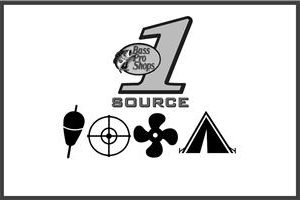
 Whether you are fishing natural or man-made bodies of water, riprap needs to be high on your structural hit list. In natural lakes, these areas could consist of islands, reefs, gravel flats or boulders, and in man-made lakes, these areas are jetties, boat ramps, old roadbeds, long, straight shorelines or even the dam. They all attract baitfish, which in turn creates ample feeding opportunity for the predator fish.
Whether you are fishing natural or man-made bodies of water, riprap needs to be high on your structural hit list. In natural lakes, these areas could consist of islands, reefs, gravel flats or boulders, and in man-made lakes, these areas are jetties, boat ramps, old roadbeds, long, straight shorelines or even the dam. They all attract baitfish, which in turn creates ample feeding opportunity for the predator fish.
Establishing the dry side of this structure is easy, but recognizing the subsurface fish-holding structure is the key! The use of quality electronics is absolutely essential in pinpointing abnormalities beneath the surface, and then placing your bait in the strike zone.
Trolling these long, straight shorelines can be an excellent form of scouting, while still having an opportunity to contact fish. However, recognizing and returning to the areas that will most likely hold additional numbers fish, and then casting to them could be all it takes to loading the boat!
The fish were staged in that specific area for a purpose; by returning to those structural elements and picking them apart by casting a Berkley Flicker Shad, you can catch every hungry and willing fish. Apply all the factors that make a specific spot productive to other areas of similar fish-attracting structure, and then replicate your presentation. Your productivity will shoot through the roof.
When determining why fish stage on a specific location, I am actually looking for an irregularity in the riprap. Whether that’s a point where they dumped extra rock during construction, a turn that is near a marina or perhaps where the riprap transitions to sub-straight. If I have been catching fish in the same spot during numerous trolling passes, I will typically return and cast to these locations to work the active fish.
One thing to keep in mind when casting crankbaits is walleyes will often swipe at and miss the bait. By using a sensitive line like Berkley FireLine, you can actually feel the hesitation in the bait’s action that comes with a missed strike and the best thing you can do is pause for a second, then continue cranking. A fairly steady retrieve is best, but I will often play around with the speed. For example, if you are feeling the hesitation we discussed, try speeding up your retrieve, and you will often get reaction strikes as they have less time to determine what they are eating.
Another great thing to keep in mind when casting cranks is to pause as the bait nears the boat. This will often entice following fish into eating, especially if they have been nosing your bait for most of your retrieve. Just as the bait is coming into view underwater, pause – what’s cool is sometimes you will actually see the walleye hit the Flicker Shad.
When casting crankbaits at riprap, it is imperative that you keep in mind how steep it is. Real steep riprap will require a bait that dives faster, and for that, I prefer a 7-cm. or 6-cm. Berkley Flicker Shad. It is critical that your crankbait closely follows the contour of the bottom during the first 10 feet of your retrieve, as that is where the majority of your strikes will occur. When fishing under shallower conditions, I recommend downsizing to a 5-cm. Flicker Shad.
When casting, I suggest you use spinning reels loaded with 10-lb. Berkley FireLine on 7-ft. medium-light action spinning rods like the Bass Pro Shops Walleye Angler Signature Series model WA70MLS-CRANK. This setup will allow you to make good, long casts with the lightweight cranks.
Being able to keep contact with your bait and the structure is crucial to keeping your Berkley Flicker Shad in front of more hungry fish. It is still important to match the size of your presentation to the fish you are pursuing. In systems where the fish are bigger, use the larger 7-cm. size, and downsize where the fish are smaller on average. I like to use a small #1 Berkley Cross-Lok Snap to attach the crankbait to the FireLine.
Color preferences are often determined by the water clarity or turbidity, but some of my favorites are Purple Pearl, Black-Silver, Shad, Black Gold Sunset, Purple Tiger, Chartreuse Pearl and FireTiger. As with my trolling preferences, my go-to color combo is the Pearl White (a color we often refer to as “Mouse”).
Note: If you have questions or comments on this or other articles of mine you may have read, contact me through the website www.thenextbite.com.
by Keith Kavajecz
- 2742 views

